7 SaaS Content Trends for 2020 (and Beyond)
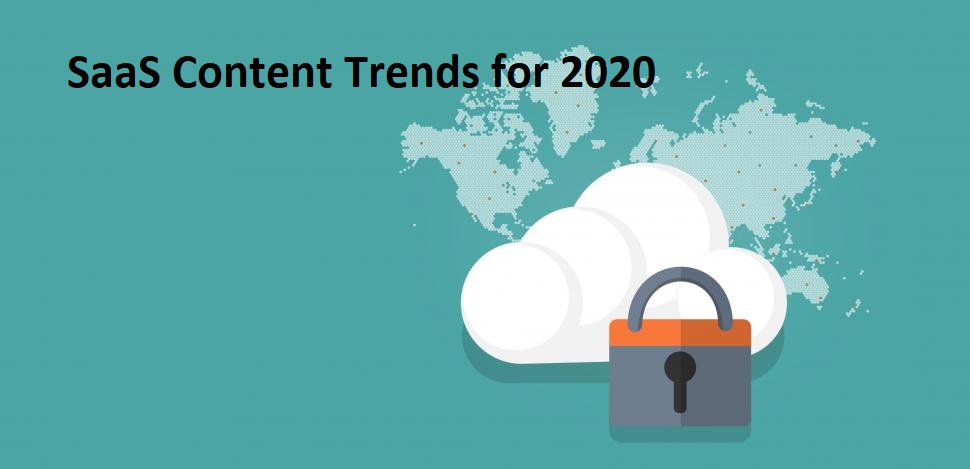
Yes, it’s that time of the year again. The time when we plan for the upcoming year. Exhilarating and terrifying at the same time, isn’t it? My plan is to take a bit of the terrifying part out of the equation by revealing the SaaS content trends for 2020.
If you work in SaaS or XaaS, you already know that content should play a big part in your 2020 strategy? But how big exactly? And how are you supposed to implement the strategy to get the best bang for your buck?
This is why you should know what your audience expects from you and what your competitors are planning to do. All this will be covered in the trends below.
First, an overview.
In a Hurry? Here’s the Quick List of SaaS Content Trends for 2020 and Beyond
- No More Guessing: No SaaS Content without a Content Strategy
- Precise Customer Journey Mapping
- Native Advertising to Appeal to SaaS Customers
- SEO for the Mobile and Voice Search-Dominated Era
- Results-Focused Content
- User-Generated Content
- Quality and In-Depth Content above Anything Else
Before we dig in, let’s take a look at a few numbers — why your SaaS absolutely needs content in 2020.
SaaS Content Statistics and the State of Affairs
A shocking 15% of the biggest SaaS companies in the world don’t have a blog. While that doesn’t mean that don’t use content at all, it’s still an important number.
Why?
Because it spells opportunity.
I know that the usual drive is to do exactly what the big companies do. But do keep in mind that those really big names have a brand recognition that small- and medium-sized SaaS companies have yet to achieve.
After all, even Salesforce blogs, so can you really afford to rely on other channels enough to ignore blogging altogether?
Moving on, the same study cited above tells us that 24% of SaaS companies use their blog to educate their readers, while 20% are product- and promotion-centered.
Wouldn’t it be nice to be able to write about your product alone and brag all day long? Actually, no.
People love informational content. It helps them make decisions and, more importantly (for you), it helps them decide to subscribe to your service.
Our clients have their own stories to tell here. Copywritech helped an iPaaS industry leader generate 50% more leads and convert 25% more leads through informational, long-form content alone. Read the full case study here.
A crushing 90% of B2B marketers say that prioritizing their audience’s informational needs helped them be more successful.
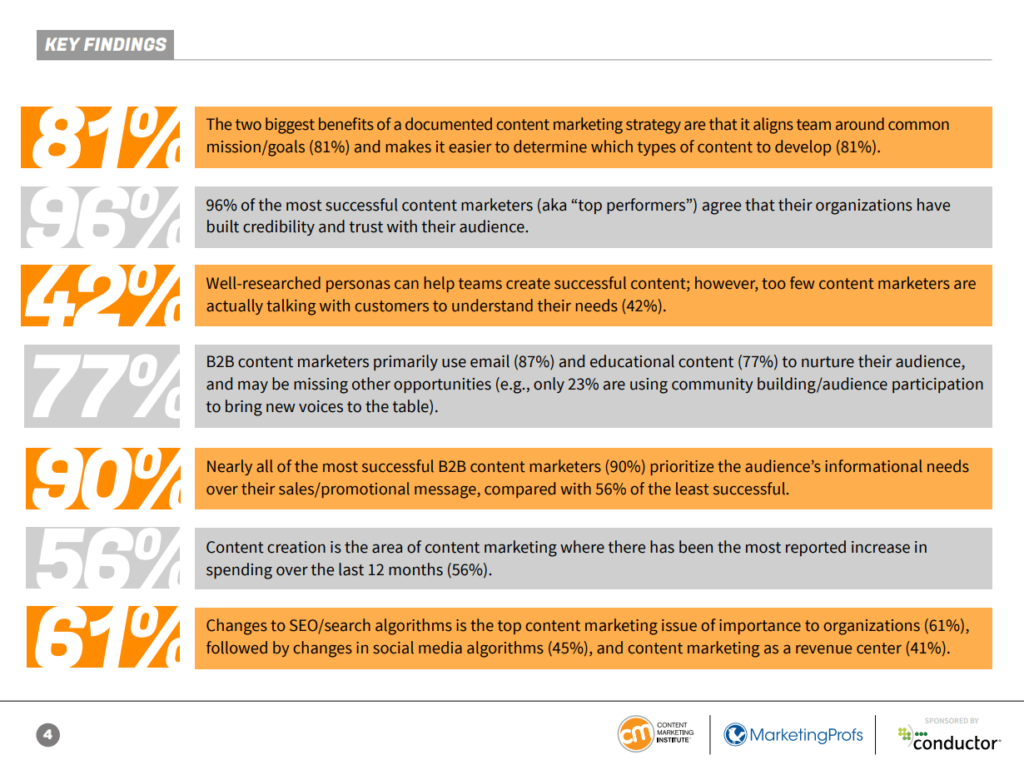
Image via Content Marketing Insitute
Another argument for in-depth informational content: Crazy Egg increased their conversions by more than 30% through long-form content. Incredibly long content (3,000 to 10,000 words) gets shared an average of 8,850 times!
So far so good: we learned that you do need content for your SaaS to generate more leads and nurture existing leads.
Now let’s take a look at how to do that in 2020 and beyond.
7 SaaS Content Trends for 2020 and How to Leverage Them
One of the most common objections to trend-revealing articles like this one is ‘how do you come up with these things? Do you just make them up?’
It’s quite a valid objection.
If you take a look at trends blog posts, you’ll see that all industries are inundated with them around the same time each year.
I can’t speak for how other people come up with these predictions but I can resume my own thought process as ‘more than educated guesses’.
The long-form of that phrase (we already established that long-form is good, right?) is below. This is how my team and I come up with predictions and these are the sources we use:
- Our own expertise. We work with a lot of SaaS creators and other tech companies throughout the year. By the year’s end we know what worked and what didn’t so we can discard failed tactics and make room for proven ones.
- General content trends. Yes, SaaS is in a league of its own, with its own challenges when it comes to content creation and marketing. But it doesn’t exist in a void. The way customers consume content is somewhat similar across industries.
- SEO trends and algorithm changes. The Google BERT update, for instance, brought new light to the importance of quality content in any industry. As content experts, we always know how algorithms change and how this affects XaaS companies.
- Market analysis. In order to correlate all the above with specific SaaS content needs, we always take a look at the market’s evolution. From Gartner reports to G2 monitoring, we know who the major players are and how the market changes from year to year. This way, we can recommend a content strategy that’s tailor-made for SaaS companies according to their niche and their competition.
- Multidisciplinary team. Aside from writers and marketers, we also have engineers in our team at Copywritech (you can meet everyone on our About page). This matters a lot because it helps us grok the technical limitations and trends in SaaS and how they correlate with marketing in general or content in particular. For instance, this helps us mitigate potential technical shortcomings with proper educational content for our SaaS clients.
That’s it with the nitty-gritty of it all. We’re getting to the business at hand.
Ladies and gents, the SaaS content trends for 2020 according to Copywritech are:
-
No More Guessing: No SaaS Content without a Content Strategy
Ever posted an article just because you had to? Ever scheduled a social media post just so a day when you were silent doesn’t pass? Or have you ever written a blog post just because your competitors had written something on a similar topic?
If you answered yes to any of the questions above, get ready for less of that and more clarity in 2020.
What does this mean exactly?
It means that you should stop randomizing your content.
Don’t publish just because you settled on one post per week. If you have nothing to say, keep quiet.
Don’t write just for the sake of filling up space. If what you’re writing doesn’t help your business goals, why waste time on it?
Start next year with a content strategy and stick to it. Make sure that your strategy and your content calendar is precisely aligned with your business goals.
In other words: don’t create a single piece of content that you can map ROI to. It’s just like stealing money out of your own pocket.
Any piece of content you create in 2020 should:
- Help your customers
- Be original
- Be mapped to a business KPI
A content strategy for your SaaS comes with countless benefits. Here are some of them:
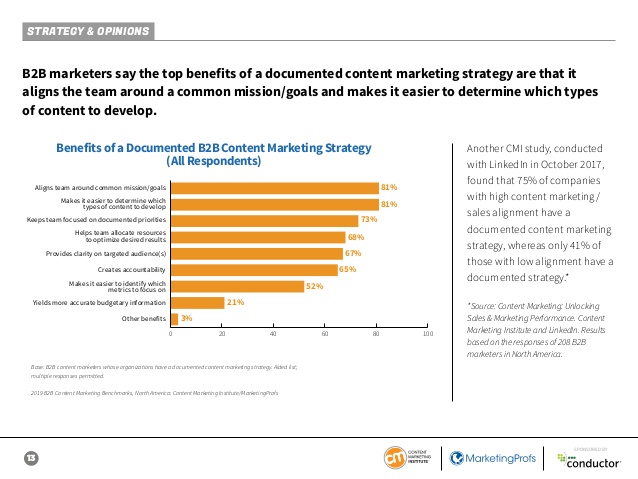
Image via SlideShare/CMI
Every company is different so the diagram above can look completely different for you. However, I have yet to meet a single company (SaaS or in another industry) that didn’t benefit from a clear content strategy.
Not sure how to create it?
Don’t worry; we’ve got you covered.
Check out our MASSIVE, in-depth guide on how to create a SaaS content strategy.
2. Precise Customer Journey Mapping
One of the biggest SaaS content trends for 2020 is something that has been coming for a long time now. Some people have already leveraged it. If that’s not you, it’s still not too late.
I’m talking about getting to know your customer MUCH better. And, more importantly, getting to know how and why they buy. Customer journey mapping will be the main focus of SaaS marketers in 2020 and beyond.
73% of B2B companies are already mapping their customer journeys. They may not all be SaaS companies, but this is obviously a trend that will continue to see growth. And a trend you don’t want to fall behind on.
As you’re most likely already aware, the customer journey in SaaS is a bit different (read: more complicated) than in other fields.
Here it is in its simplest form:
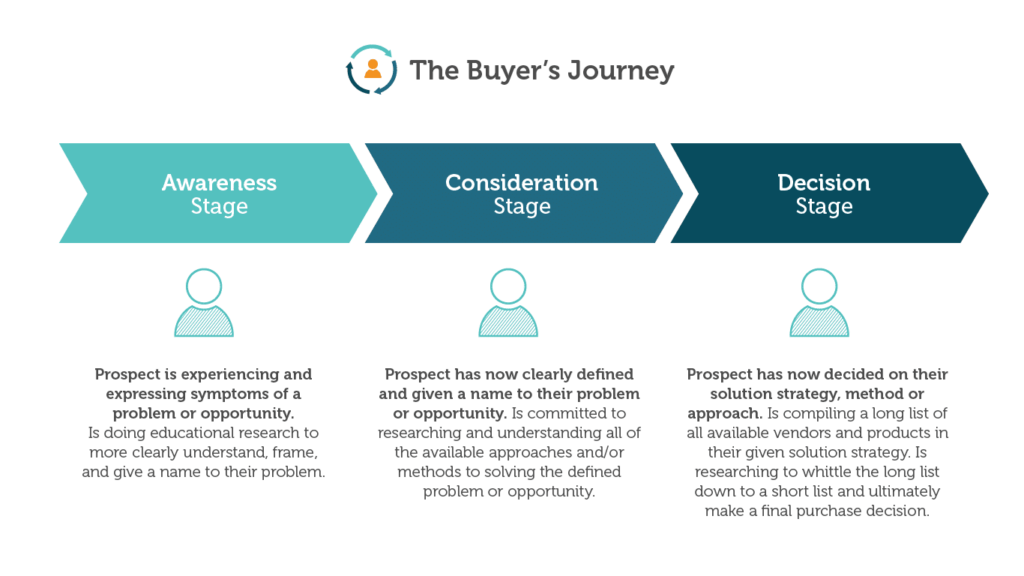
Image via Aira
Pretty straightforward, right? It’s easy to figure out which type of content goes where.
Sadly, though, things aren’t that easy in SaaS content marketing. On the plus side, they are far more interesting:
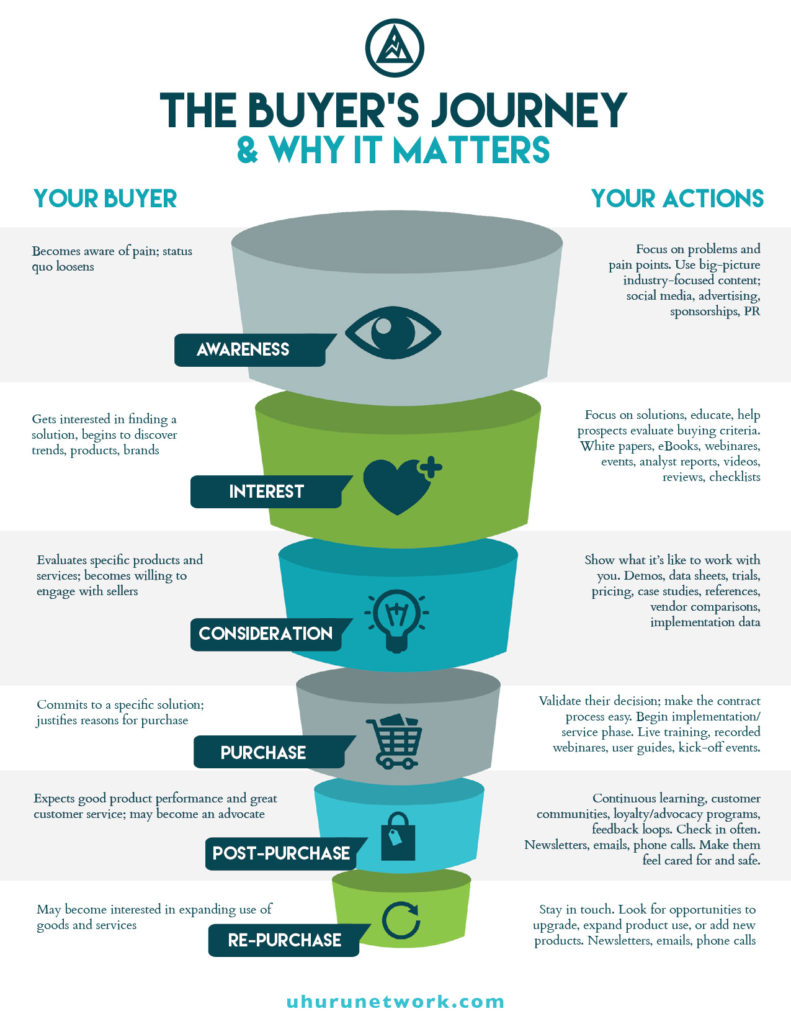
Image via Uhuru Network
Take the graph above and personalize it for your own buyer personas. Keep in mind that the guidelines above are just that — guidelines. They are by no means a definitive roadmap for all the content types you have to create.
What you need to do instead is take another close look to your buyer personas and decide what type of content they prefer and at what stage in their journey they prefer to receive it.
This in-depth mapping helps you:
- Not waste time and money on content that’s irrelevant at a certain stage for a certain persona
- Get more accurate with your targeting
- Increase your lead generation and lead conversion rates (remember that personalization reduces acquisition costs by as much as 50%)
- Reduce your churn rate with proper post-purchase and re-purchase content
Following up on the point above — the one about having a content strategy, you remember it, make sure that precise customer journey mapping is a central part of your strategy for 2020. Take the time to lay down all the types of content and all the topics your buyer persona might need at every purchase stage. Then proceed to write mind-blowing content.
3. Native Advertising to Appeal to SaaS Customers
This is another one of the SaaS content trends for 2020 that has begun to take shape in recent years. So it’s not all new but growing steadily. But first:
What Is Native Advertising?
Native advertising is the type of advertising that may look and feel like regular content but it’s not. It can be posted on your own website or on third-party websites. Native advertising follows the usual editorial guidelines of the website it’s posted on but it’s designed to promote a brand or a product.
You can often find them as recommended content on a website or in a social media feed.
This technique is old enough to get its own answer box from Google and a definition from Oxford:
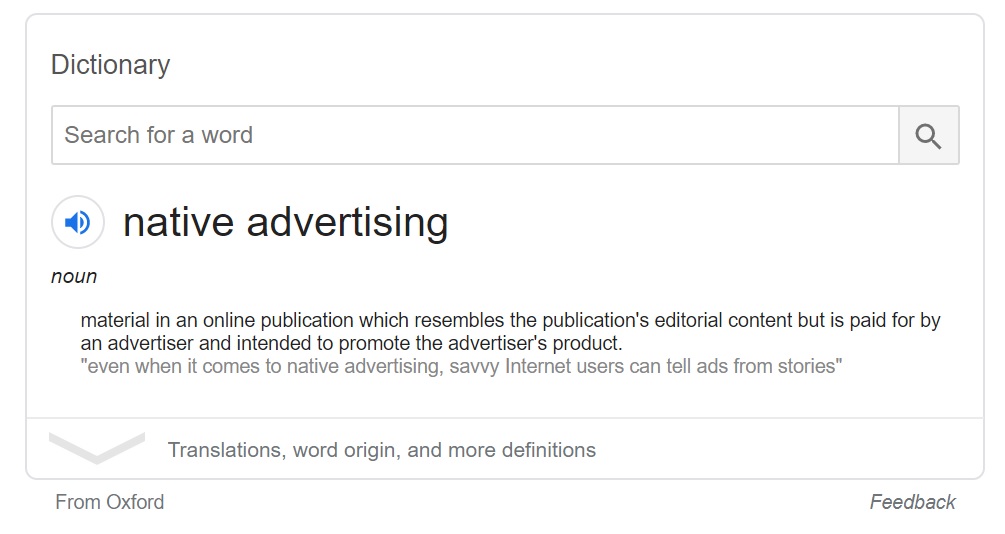
Why is this already big deal becoming an even bigger deal, especially in SaaS?
For two reasons that are strongly connected:
- People are sick of anything that looks like an ad, walks like an ad and quacks like an ad
- SaaS customers are some of the most tech-savvy people you can find online
Roughly 30% of ALL internet users have an ad blocker installed.
I use an ad blocker and I’M A MARKETER — I want to see ads to learn from them. But there are just too damn many of them.
Other reasons why people use ad blockers in this great infographic:
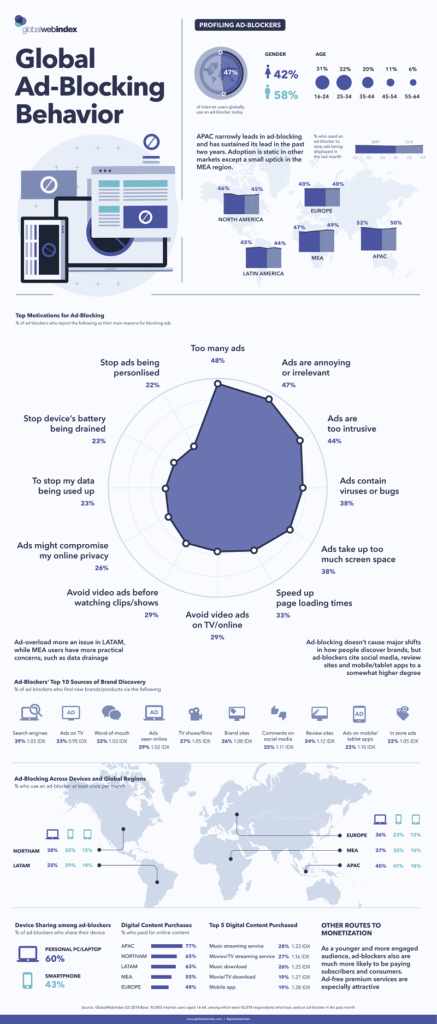
Image via Global Web Index
OK, so we clean up the intrusive SaaS ads. What are we left with? How do you leverage native advertising in SaaS?
Briefly put, through excellent content marketing on earned, paid or partner platforms.
Let’s see what that means:
Native advertising on your own website or blog
Remember what we discussed about offering relevant, informational and value-adding content to your customers?
You may be already doing that and wondering how to make sure that you can convert blog readers into paying customers. It’s a fair question.
If you’re a marketer who reads and excellent piece on a company’s blog, you already know that you can simply move on to their homepage to find your way to their services. You know how to buy from them if you really want to.
But most people aren’t marketers. So they don’t even think to buy from the authors of a blog post that actually helped them. They’re not mean. They just don’t think about it that way.
This is where your savvy marketing comes in.
All your blog posts need to have a CTA. Whether it’s in-text, on the right-hand side column, or at the end of the post, you need to let your readers know that your expertise extends far beyond writing. And that they can benefit more from choosing to pay for your solution.
It’s not just copywriting that converts! Content can convert too!
Don’t believe me?
Take a look at this case study. It details how our iPaaS client managed not only to generate 50% more leads but also to convert 25% more leads into paying customers. All through content provided by Copywritech.
See that? That’s native advertising on an owned platform.
We’re providing you with an in-depth, helpful article on the SaaS content trends for 2020 but we’re also giving you a slight nudge to help you move forward in your purchase journey.
And this is not the only nudge in this article.
Is it advertising?
Yes, kind of. It’s not blatantly asking you to buy our services. It’s reminding you that we are a business and that we have had great results for our clients. It’s there to remind you that you could be one of those clients.
More importantly, it’s also highly relevant (a case study featuring a company in iPaaS) and not intrusive.
Native advertising on a paid platform
This is pretty straightforward: you pay for your content to appear on a popular platform. Like PayPal to have their content featured on entrepreneur.com:
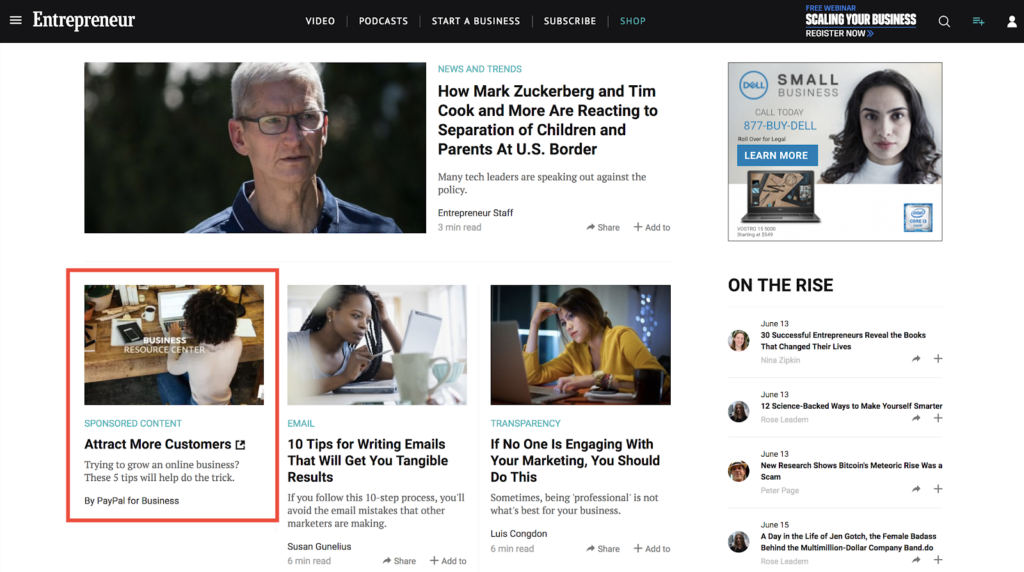
Image via LinkedIn
If you take a close look at the PayPal content you’ll see that it’s not an actual ad. Again, it doesn’t tell you to become a PayPal client. In fact, it offers you content that might be of interest to you.
Of course, once you open the article you’ll see that one of the ways to “grow an online business” is to use PayPal.
But it’s not the only way. You will also be left with valuable insights after reading the article.
So, how do you make sure that the content you publish as native advertising on a paid platform is worth the money (bear in mind that this is NOT cheap):
- You choose the platform carefully: you make sure that your buyer persona reads that platform religiously and that they trust the content there.
- You create stellar content that not only abides by the editorial guidelines (remember that it needs to blend in with their ‘regular’ content) but also provides excellent value.
- You measure: you never sign up to publish content regularly for a whole year on a platform you haven’t tested. Sure, Entrepreneur may be the Holy Grail for some. But it can also be utterly useless for other SaaS businesses, much like any other platform that accepts sponsored content.
Native advertising on a partner platform
Usually known as guest posting.
Various media outlets accept syndicated or original content at no fee. Sure, your advertising options are limited here. You will most likely get a single link to your website in the article body and one in the bio.
And you can’t overtly promote your SaaS like you can when you pay for the article placement.
However, the bio can work wonders for you. Not only will you get more SEO juice from having backlinks from high-DA websites but you can also get direct customers ready to buy.
I have personally tested this option time and again.
Our About page shows just some of the outlets where I’ve been featured as a guest writer or expert:
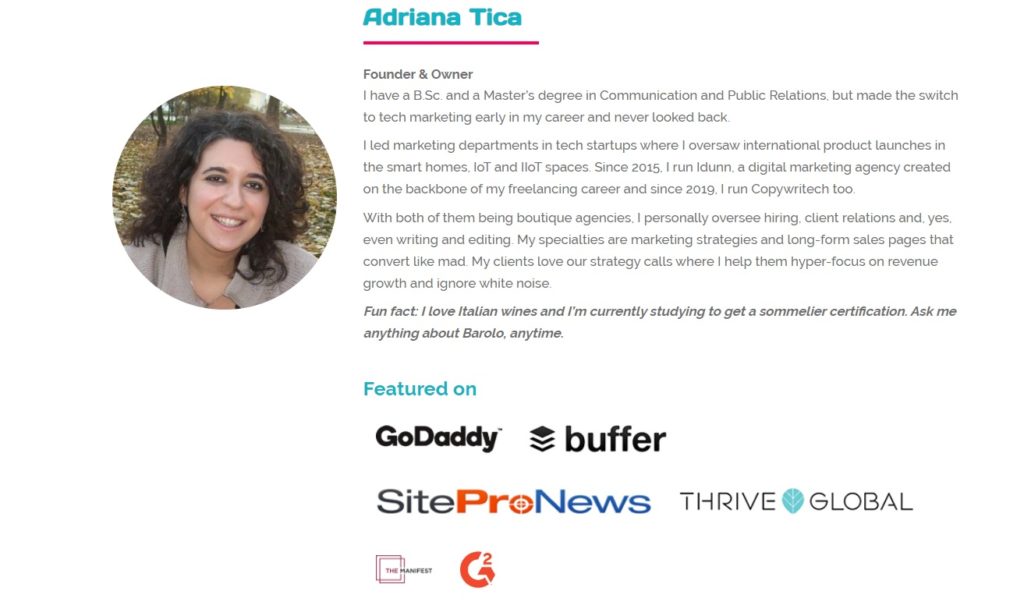
Some of the articles I published came with almost instant ROI. People clicked on the link in my bio, went to the contact page, then wrote to say they loved what they read and that they want some content JUST LIKE THAT.
This is how you build trust and authoritativeness. Regular ads can’t help you with that.
One last tip here: when you publish a new blog post, you can invest a small budget in promoting in on social media. It still counts as native advertising (if you use the ‘Sponsored Post’ format) and it will get your article the boost it needs to gain some traction and some much-coveted reach.
SEO for the Mobile and Voice Search-Dominated Era
Ah, this is definitely one of my favorite SaaS content trends for 2020.
Why, you ask?
Well, first of all, because I love SEO content writing.
And second of all because this trend comes to confirm what I’ve been saying for years: SEO writing has to be natural, not forced.
Don’t we all love being right?
OK, enough bragging. Let’s take a look at what mobile and voice search spell for SEO content in 2020.
First of all, the facts:
- Voice search usage is expected to triple in upcoming years thanks to the growth of voice assistants like Siri, Cortana or Alexa.
- Mobile use of the internet has been on an ascending trend for years now and that’s not stopping anytime soon either.
These two trends are interconnected. When you use a mobile phone, you don’t have time to scroll through thousands of results. Or through huge walls of text.
Now if you use that same mobile device for a voice search, you will most likely get a featured snippet. This is a single result that can be read back to the user and that usually appears before the rest of the results.
Here’s what this looks like:
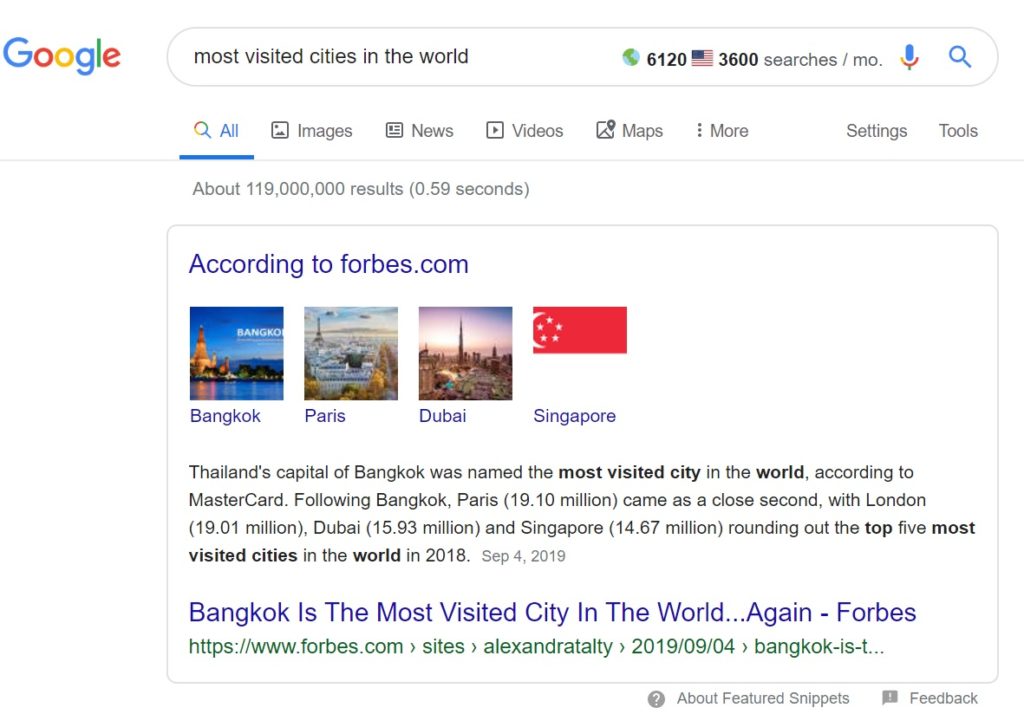
In other words, if you don’t have a featured snippet, you don’t really exist for voice searchers.
How can you get that featured snippet?
- Make sure that your website is mobile responsive and that its loading speed is very high.
- Take a look at what featured snippets for your desired keyword look like. Can you top that kind of content?
- Add a table of contents or a list to the top of all your articles. (As you can see in this article)
- Make the most out of H2 and H3 subheadings. Create them in the form of questions that are immediately followed by an answer that’s no longer than 90 words (take a look at the ‘native advertising’ section above for an illustration)
But, above everything else, SEO content for SaaS should be human-friendly in 2020 and beyond.
This is what I’ve been saying for years.
Ignore search engines — they’ll never be your clients. Plus, if you write in a human-friendly manner, search engines will reward you with higher rankings.
Keep this in mind: search engines take their cues from humans, not the other way around.
Here’s how you write for humans:
- Naturally, no keyword stuffing and no artificial and weird phrasings
- Write as if you are explaining something to a friend — avoid complicated words and using too much jargon
- Optimize for long-tail keywords — the kind of queries actual human beings use in 2020 and beyond. Example: ‘how do I choose the best social media SaaS’ instead of ‘social media SaaS’
- Always optimize your content with user intent in mind. You can read an in-depth article about user intent here.
- Only post readable content: no one likes huge walls of text. Mobile users hate it with a passion. Videos, photos, infographics, subheadings and bullet points are ideal ways to break down large walls of text and make it more skimmable.
The best part about all this is that long-tail keywords are still much easier to rank for than their short counterparts. Plus, there are hundreds of variations out there, so all you have to do is find the one(s) that your audience is most likely to use.
5. Results-Focused Content
The cost of copywriting services is still increasing. So is that of content writing services.
While there is an abundance of regular and technical writers out there, very few of them can actually deliver content that has a great ROI.
So why waste money on content that just sits there without producing any real results. 82% of marketers who blog say they see positive ROI from their efforts.
That might look like an encouraging number. But think about it for a while:
- There are still 18% of marketers who blog without results (or who can’t measure results)
- Even those who blog regularly can’t say that each of the pieces of content they published has yielded ROI
If you don’t want to be yet another average blogger that no one reads, you need to start attaching actual goals to each of the pieces you publish.
Even if you don’t really care about the other SaaS content trends for 2020, try and make this your priority.
You see, with costs of content writing exploding, you can’t really afford to publish just for the sake of publishing. So go back to your SaaS content strategy and make sure every piece of content in your editorial calendar can check these two boxes:
- It’s useful and relevant to your buyer audience’s current phase in the buying cycle
- It can be easily connected to your business goals.
Listen, I know that no strategy is perfect. No matter how hard you try to vet any piece of content you create and no matter how good you are at it, some of them will still fall flat.
They won’t be read by more than 100 people. Or they’ll be hits on social media but they won’t bring you and new subscribers.
But when you attach a business goal to everything you publish, the chances of any of these happening are significantly lower than if you were to publish whatever you feel like writing.
6. User-Generated Content
85% of consumers say that user-generated content is more influential than brand content. After all, everyone needs to fact-check what you’re saying, right?
Of course you think your SaaS is the best in its field. It’s your baby.
Of course you say that you can deliver results. You need to get more subscribers.
But why should they take your word for it?
You need social proof. You need your buyer persona’s peers to vouch for you.
In 2020 and beyond, you may attract leads with blog posts and whitepaper. But you’ll only convert them with user-generated content.
Make it easy for your leads to find that content. Encourage your existing customers to:
- Create testimonials that you can post on your website
- Leave reviews on third-party websites like G2
- Create case studies and subscriber stories that go in-depth on how you helped them
- Leave reviews on your social media profiles or Google My Business
Briefly put: wherever your brand can be found, your leads should also find some social proof or user-generated content.
At Copywritech, coming up with new ways for our XaaS clients to create and leverage user-generated content is a central part of the 2020 strategy. Make sure it’s part of yours, too.
7. Quality and In-Depth Content above Anything Else
Long-form content generates more backlinks than its short counterpart.
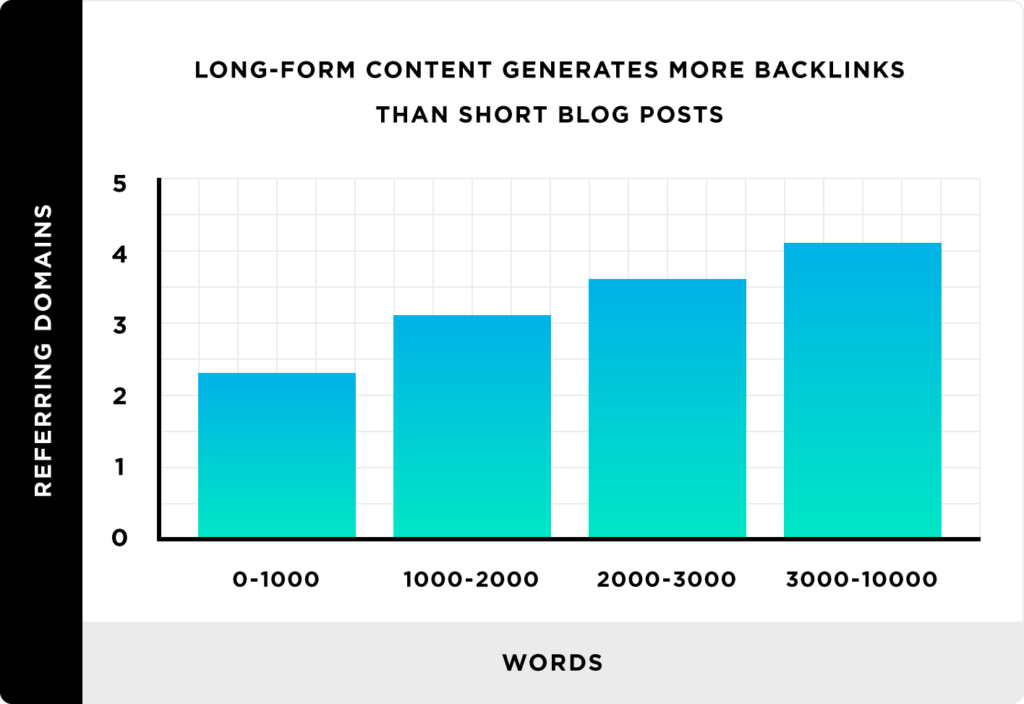
Image via Backlinko
Long-form content ranks better than short blog posts.
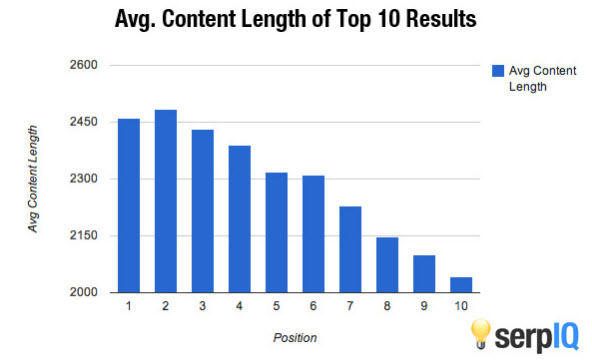
Image via WordStream
And yes, long-form content converts better than short-form.
But should we all ramble on and on until we hit that word quota?
Not at all!
What we should do is write exhaustively. Write as much as we need to cover all the facets of a topic. Write as much as needed so that the user doesn’t bounce back to SERPs in search of a more comprehensive post.
Under no circumstances, though, should you fluff up your pieces just to beat your competitors’ word count. If you’re planning to write on the same topic they just did, be sure that a longer post truly makes sense.
Or, perhaps, you could be more succinct and make a clearer point? You know, because, once again, you’re writing for humans, not search engines.
Either way, your goal is to make sure that each post you publish is:
- Well-researched — add outbound links to authority websites in your field
- Comprehensive — after reading it, your user knows as much as possible on the topic. They need no (or very little) additional research
- Written to inform and help, not to condescend.
Take this article for example. It could have been much shorter. I could have simply enumerated the SaaS content trends for 2020 and added a few supportive links to each.
But I know my audience. I know that they hate forecasts posts that are published just because it’s that time of the year.
If they’re going to read a ‘trends and forecasts’ post, it better provide them with some actual value.
So, instead of simply stating what the trends are, I did two additional things:
- Explained why Copywritech’s take on the SaaS content trends for 2020 is worth reading (why we’re an authority on the matter)
- Turned a regular and somewhat boring article into an action-packed piece. My readers don’t just learn what the trends are. They also learn how to leverage them — I offer practical tips, examples and detailed how-tos.
SaaS Content Trends for 2020 – Final Thoughts
If I were to sum all this up in a single trend, that would be putting the SaaS customer first.
It may sound like an over-rated cliche but I strongly believe that we’re just now beginning to understand the true dimensions of this trend.
We’re just now delivering actual personalized content. And we begin to invest in learning more about what our customers need — not just in terms of our solution, but in general. So we can offer better, more targeted and hyper-informative content.
Need this kind of content for your SaaS? At Copywritech we specialize in empowering XaaS companies with content that ranks, delights and converts. We know more about the SaaS content trends for 2020 than we let on and we’re happy to share that knowledge with you.
Fill in the form below and our super-friendly staff will get in touch with you in less than 24 hours!
2 Comentarii la “7 SaaS Content Trends for 2020 (and Beyond)”
[…] the commas are there. The occasional typo is perfectly acceptable. What’s not acceptable in content writing in 2020 and beyond is writing without a precise business or marketing goal in […]
[…] content trends for 2020 and beyond show us a clear increase in voice search and mobile search. This means that people will […]